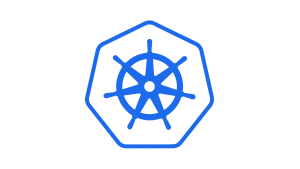
This year at Dockercon17 in Austin, Texas, Docker announced support for Kubernetes, making the container orchestration engine a critical part of its enterprise platform. This announcement wasn’t surprising in the least, as Kubernetes continues to show strong momentum in the container orchestration space. We’re excited by this relationship and are continuing to work to bring even deeper visibility into Kubernetes throughout the New Relic ecosystem.
Kubernetes is the leading container orchestration engine
Originally developed by Google, Kubernetes (often referred to as k8s) is an offshoot of the Borg project, Google’s internal container-oriented cluster-management system. It's now an open source platform hosted by the Cloud Native Computing Foundation (CNCF), whose mission is to advance the development of cloud native technology and services by creating a new set of common container technologies. As the leading container orchestration engine, Kubernetes provides an abstraction layer that allows you to schedule and deploy container applications in physical or virtual environments.
This announcement by Docker further validates Kubernetes’ leadership position in the container orchestration space. It is growing fast and provides many key orchestration capabilities, such as service discovery, load balancing, and horizontal scaling. Most important, it gives organizations a flexible platform to run their workloads on-premise or in the public cloud without making any changes to the application layer. Kubernetes also has a large and active developer community, making it one of the fastest growing open source projects in history.
Container adoption is growing fast
Adoption of container technology is accelerating year over year. According to one article on ZDNet, citing 451 Research, the container technology market is expected to grow 40% per year, from just $762 million in 2016 to a whopping $2.7 billion by 2020. One driver of this amazing growth, we suspect, is that enterprise organizations are adopting containers because of their portability. Container portability mitigates cloud vendor lock-in and reduces costs through better infrastructure capacity utilization. We predict this adoption will dramatically increase over the next 12 to 24 months.
Kubernetes will be a key player in cloud adoption, as it’s quickly become the central container orchestration engine for most major cloud providers, including Google Cloud Platform, IBM Bluemix, and Red Hat OpenShift. Even Azure recently added support for it. Most industry leaders in the infrastructure, Infrastructure-as-a-Service (IaaS), and Platform-as-a-Service (PaaS) space have joined CNCF. Many of these providers and distributions are standardizing on Kubernetes (or at least making it part of their offering).
We’ve talked with many organizations that are building their internal PaaS (“private cloud”) on Kubernetes. They offer the platform for developers to run their applications on top of it. And many of these companies see moving to containers and container orchestration as critical steps in embracing a mature DevOps culture. Tools like Docker and Kubernetes fit precisely into the twelve-factor app model, a key reference for organizations transitioning to a modern continuous-delivery business model.
What New Relic brings to the party
New Relic is working hard to support this new relationship (and general container growth) by striving to provide even deeper visibility into Kubernetes on the application, container, pod (groups of one or more containers), and host levels. Having great visibility at both the application level and the infrastructure level becomes even more important in the world of containers, especially when combined with orchestration in dynamic environments.
Today, with New Relic APM you can monitor your Java, .NET, Node.js, PHP, Ruby, Python, and Go applications running on containers inside Kubernetes clusters. And with New Relic Infrastructure you can monitor all your nodes, including the containers and the core Kubernetes processes (for example, kube-scheduler, kube-controller-manager, and kubelet) running within them.
Insight into all levels of the container stack is essential for companies that want to move fast with confidence and take advantage of the power of container orchestration.
We believe Kubernetes has become the de facto standard for container orchestration, and will play a key role in the future of infrastructure. And that future is coming fast.
The views expressed on this blog are those of the author and do not necessarily reflect the views of New Relic. Any solutions offered by the author are environment-specific and not part of the commercial solutions or support offered by New Relic. Please join us exclusively at the Explorers Hub (discuss.newrelic.com) for questions and support related to this blog post. This blog may contain links to content on third-party sites. By providing such links, New Relic does not adopt, guarantee, approve or endorse the information, views or products available on such sites.




